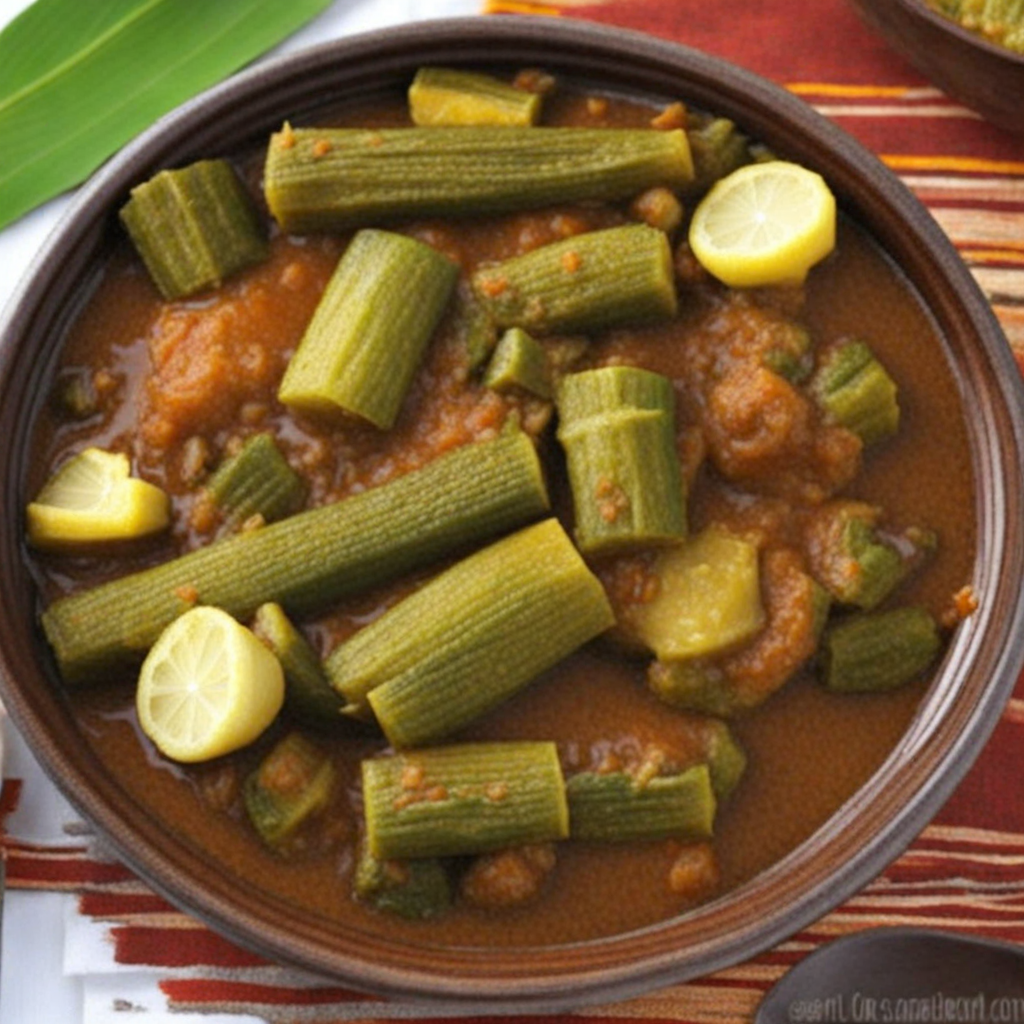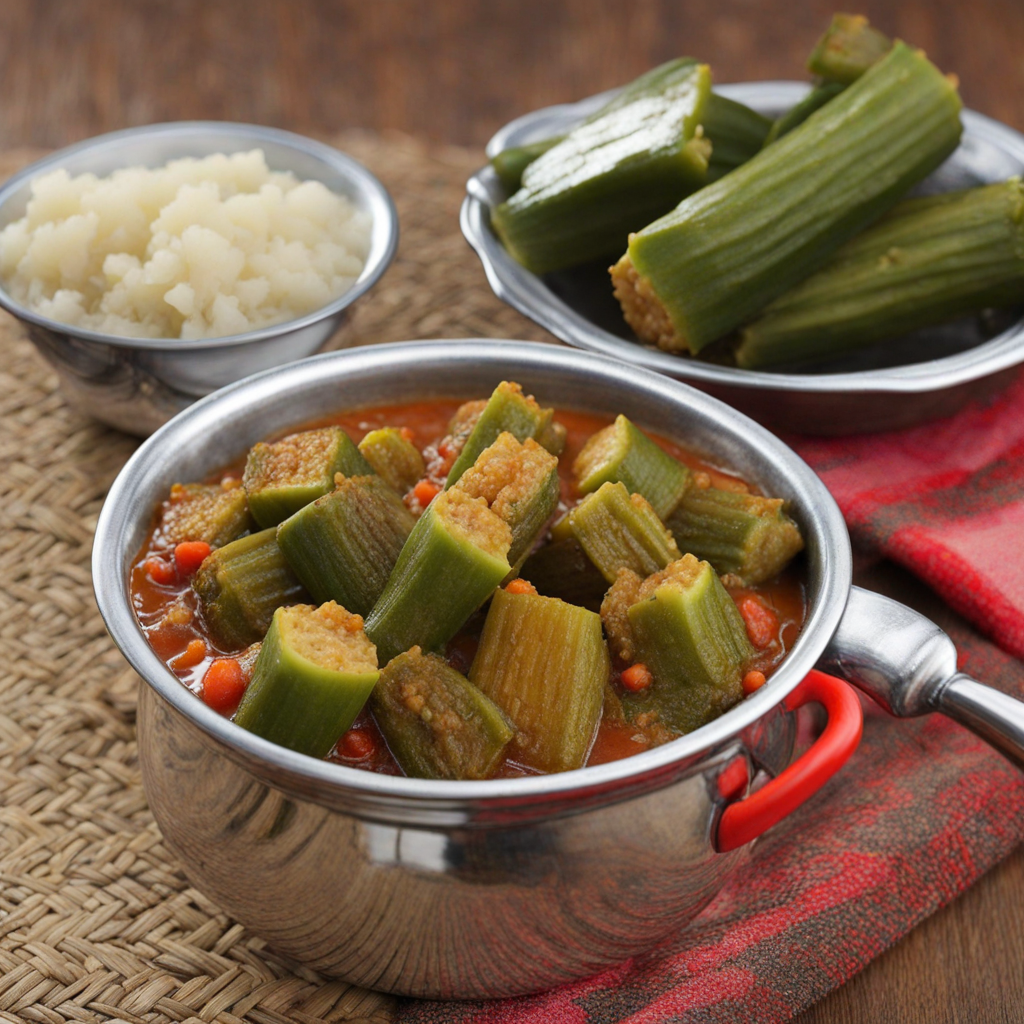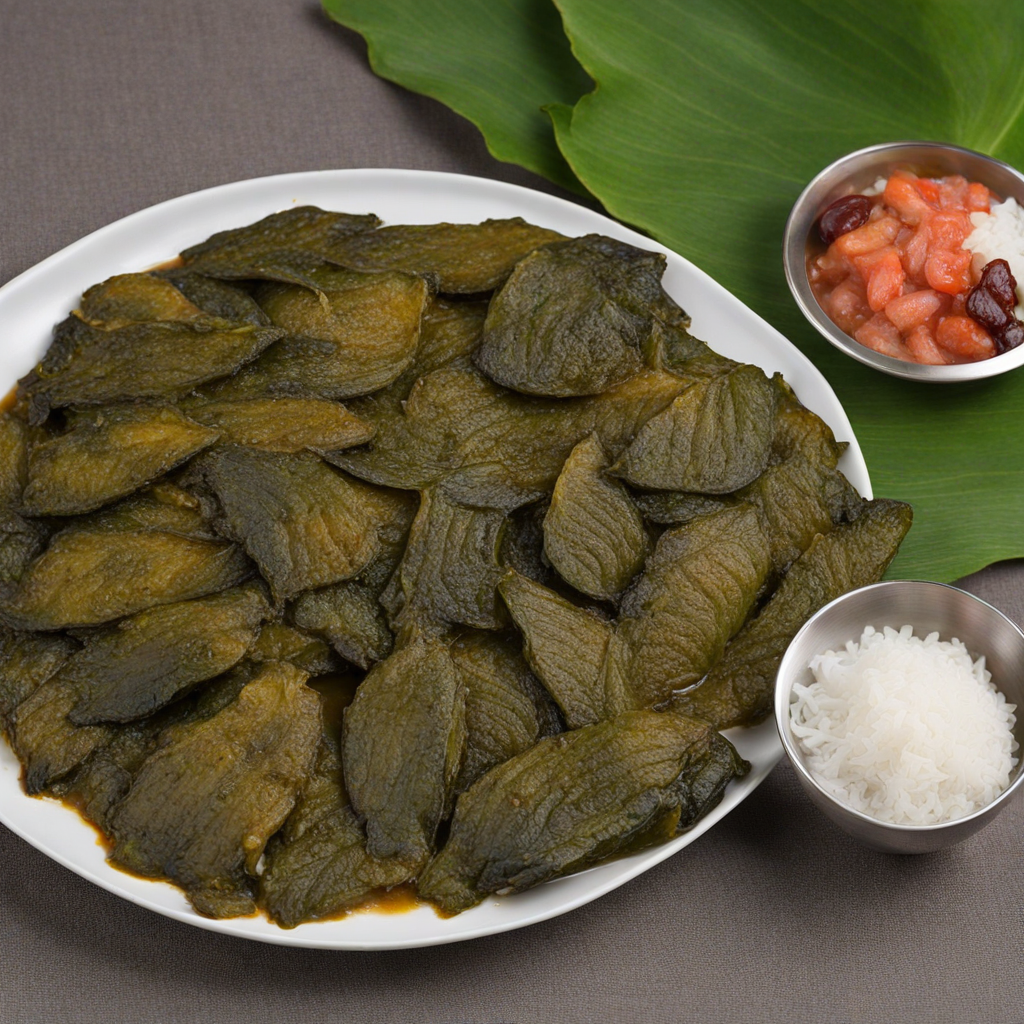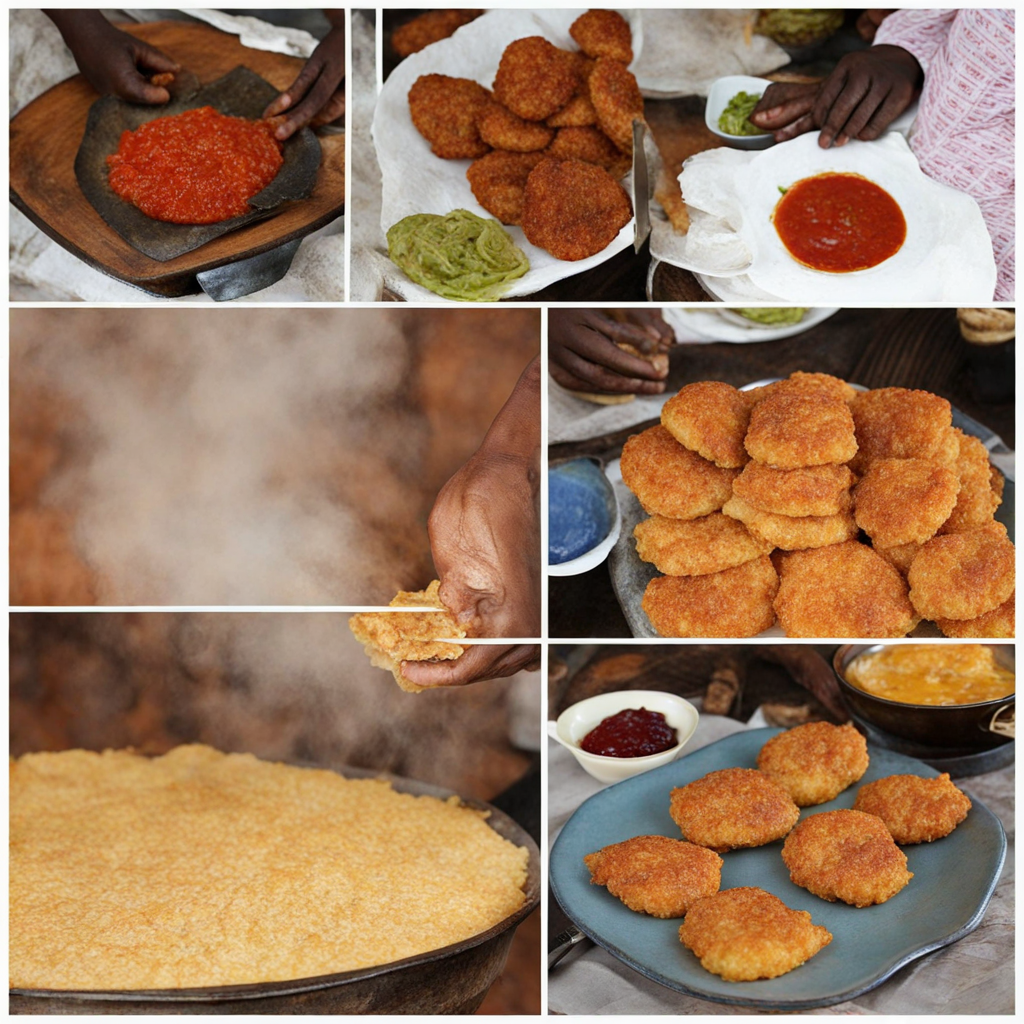Dongo-Dongo
Dongo-Dongo is a traditional dish from the Congo that celebrates the rich culinary heritage of the region. This delectable meal primarily features cassava leaves, which are known for their vibrant green color and nutritious profile. The leaves are meticulously washed and then finely chopped, creating a base that is both earthy and slightly bitter. The preparation involves slow-cooking the leaves with a combination of palm oil, groundnut paste, and an array of local spices, which infuse the dish with deep, complex flavors. The result is a thick, savory stew that is both satisfying and hearty, ideal for pairing with staple foods like rice or fufu. The flavor profile of Dongo-Dongo is truly unique, showcasing the balance between the natural bitterness of the cassava leaves and the richness of the palm oil. The groundnut paste adds a creamy texture and a nutty undertone that complements the dish beautifully. In many households, Dongo-Dongo is often enriched with additional ingredients such as fish, meat, or even mushrooms, making it a versatile meal that can cater to various tastes and preferences. The dish is often served during special occasions, highlighting its cultural significance and the communal spirit of sharing food in Congolese traditions. As you savor Dongo-Dongo, you'll experience not just a meal but a taste of the Congo's vibrant culinary landscape. The dish embodies the essence of home-cooked comfort food, with its robust flavors and aromatic spices inviting you to indulge in each bite. Whether enjoyed at a local eatery or prepared in a family kitchen, Dongo-Dongo promises to deliver an unforgettable culinary journey that showcases the heart and soul of Congolese cuisine.
How It Became This Dish
Dongo-Dongo: A Culinary Journey Through the Heart of Congo Dongo-Dongo is more than just a dish; it embodies the rich tapestry of culinary traditions, cultural significance, and social dynamics of the Democratic Republic of the Congo (DRC). This beloved Congolese dish, primarily made from leafy greens, particularly the leaves of the cassava plant, has a history that reflects the broader narrative of the region's agricultural practices, sociocultural exchanges, and the resilience of its people. #### Origins: The Roots of Dongo-Dongo The origins of Dongo-Dongo can be traced back to the indigenous communities of the Congo Basin, where cassava (Manihot esculenta) has been a staple crop for centuries. Cassava was first domesticated in South America and made its way to Africa in the 16th century, becoming a vital part of the diet across the continent due to its adaptability to diverse climatic conditions and its ability to thrive in poor soil. In the DRC, cassava became intertwined with local customs and agricultural practices. The leaves of the cassava plant, which are often overlooked in favor of its tubers, are rich in nutrients and have become a central ingredient in Dongo-Dongo. The dish's name is derived from the Lingala language, which is widely spoken in the DRC. "Dongo" can be interpreted as "to stir" or "to mix," which aptly describes the preparation method that involves combining the finely chopped greens with various ingredients to create a hearty meal. #### Cultural Significance: A Dish of Community and Tradition Dongo-Dongo is not just a culinary staple; it holds profound cultural significance in Congolese society. Traditionally, the dish is often prepared during communal gatherings, family celebrations, and significant life events such as weddings or rites of passage. The act of cooking Dongo-Dongo brings people together, fostering a sense of community and shared identity. In many Congolese households, the preparation of Dongo-Dongo is a ritualistic affair, often involving multiple family members or neighbors who gather to chop the greens, prepare the meat or fish, and mix the ingredients. This collaborative effort is a celebration of community, reflecting the values of kinship, cooperation, and mutual support that are central to Congolese culture. Moreover, Dongo-Dongo is emblematic of the Congolese spirit of resilience and resourcefulness. In a country that has faced political turmoil, economic challenges, and social upheaval, the dish serves as a reminder of the importance of food sovereignty and the ability to sustain oneself using local resources. The use of indigenous ingredients not only highlights the region's agricultural wealth but also showcases the culinary creativity of its people. #### Ingredients and Preparation: A Culinary Canvas While the core of Dongo-Dongo is its cassava leaves, the dish can vary significantly based on local ingredients, personal preferences, and regional variations. Typically, the preparation involves finely chopping the cassava leaves and sautéing them with ingredients like onions, tomatoes, and spices. In many recipes, meat—often goat, chicken, or fish—is added, enriching the dish with protein and flavor. In some regions, groundnuts (peanuts) are included to impart a nutty taste and enhance the nutritional profile. The dish is usually served with a staple carbohydrate, such as fufu (a dough-like consistency made from cassava or other starchy ingredients) or rice, making it a complete and fulfilling meal. The preparation of Dongo-Dongo also reflects the influence of other culinary traditions. The DRC is a melting pot of ethnicities and cultures, and as a result, the dish has evolved over time, incorporating elements from neighboring countries. For instance, in the eastern regions of the DRC, you might find Dongo-Dongo prepared with local spices or served alongside Ugali, a stiff porridge made from maize flour. #### Evolution Over Time: From Tradition to Modernity As the DRC navigated the complexities of the 20th and 21st centuries, Dongo-Dongo has also experienced profound changes. The socio-political landscape, marked by colonialism, independence struggles, and ongoing conflicts, has influenced food production and consumption patterns. The reliance on cassava has remained steadfast, as it is a drought-resistant crop that can be cultivated in various conditions, making it a reliable food source for many Congolese families. However, urbanization and globalization have introduced new challenges and opportunities for traditional dishes like Dongo-Dongo. In urban centers such as Kinshasa and Lubumbashi, the dish has found its way onto restaurant menus, often with modern twists that appeal to younger generations. This adaptation reflects a blend of traditional values and contemporary tastes, as chefs experiment with new ingredients while keeping the essence of the dish intact. Moreover, the rise of food tourism in the DRC has brought renewed attention to traditional dishes like Dongo-Dongo. Travelers seeking authentic culinary experiences are drawn to the rich flavors and cultural narratives embedded in Congolese cuisine. This interest not only promotes local culinary traditions but also provides economic opportunities for local farmers and restaurateurs. #### Conclusion: A Dish that Connects Generations Dongo-Dongo is a powerful testament to the enduring nature of food as a cultural artifact. It connects generations, serving as a link between the past, present, and future of Congolese society. As the dish continues to evolve in response to changing social dynamics and culinary trends, its core remains rooted in the values of community, resilience, and cultural identity. In essence, Dongo-Dongo is more than a meal; it is a story—one that reflects the agricultural heritage of the Congo, the communal spirit of its people, and the adaptability of a culture that thrives against the odds. As it graces tables in homes and restaurants alike, Dongo-Dongo invites all who partake in it to savor not just its flavors, but the rich history and traditions that it represents.
You may like
Discover local flavors from Congo







